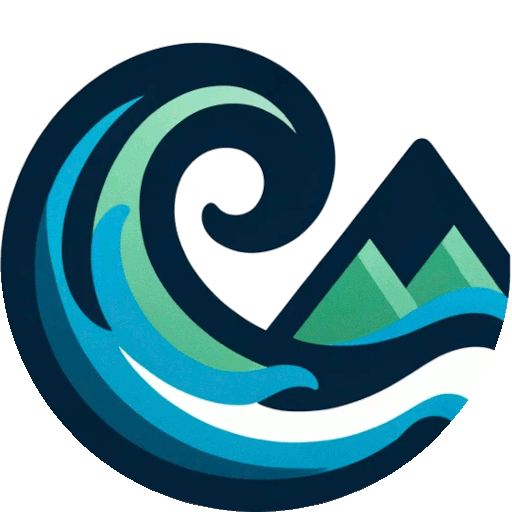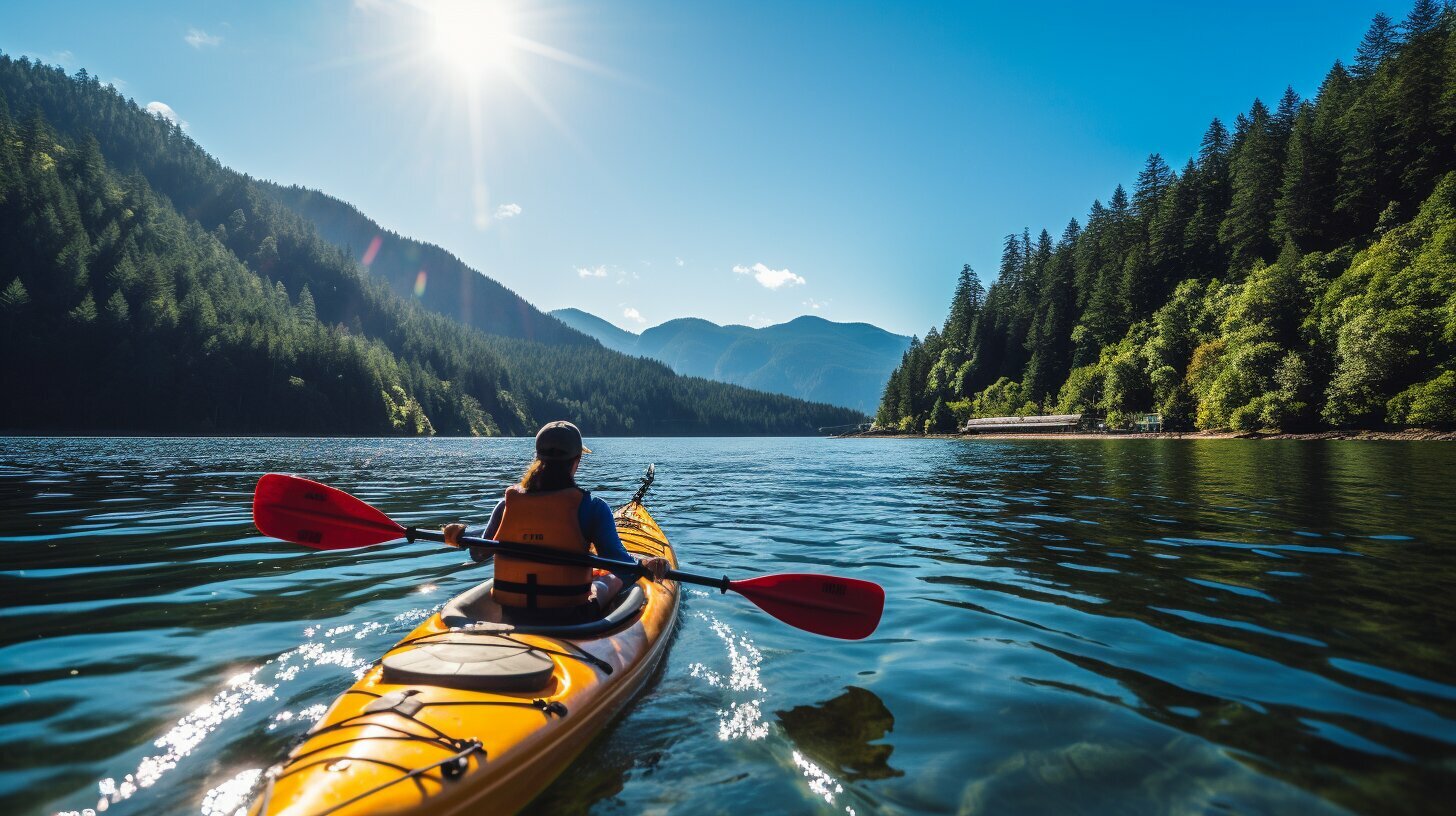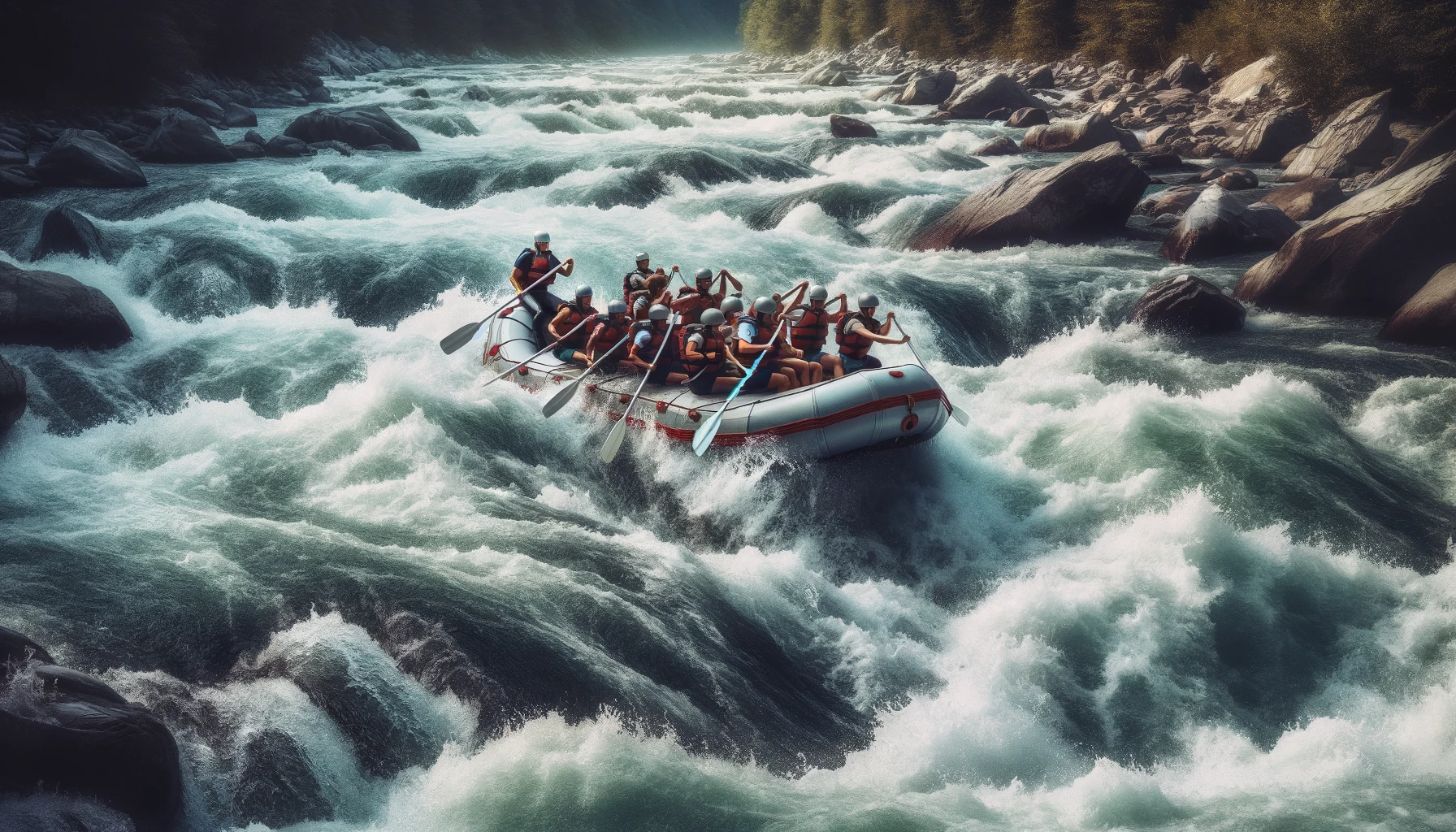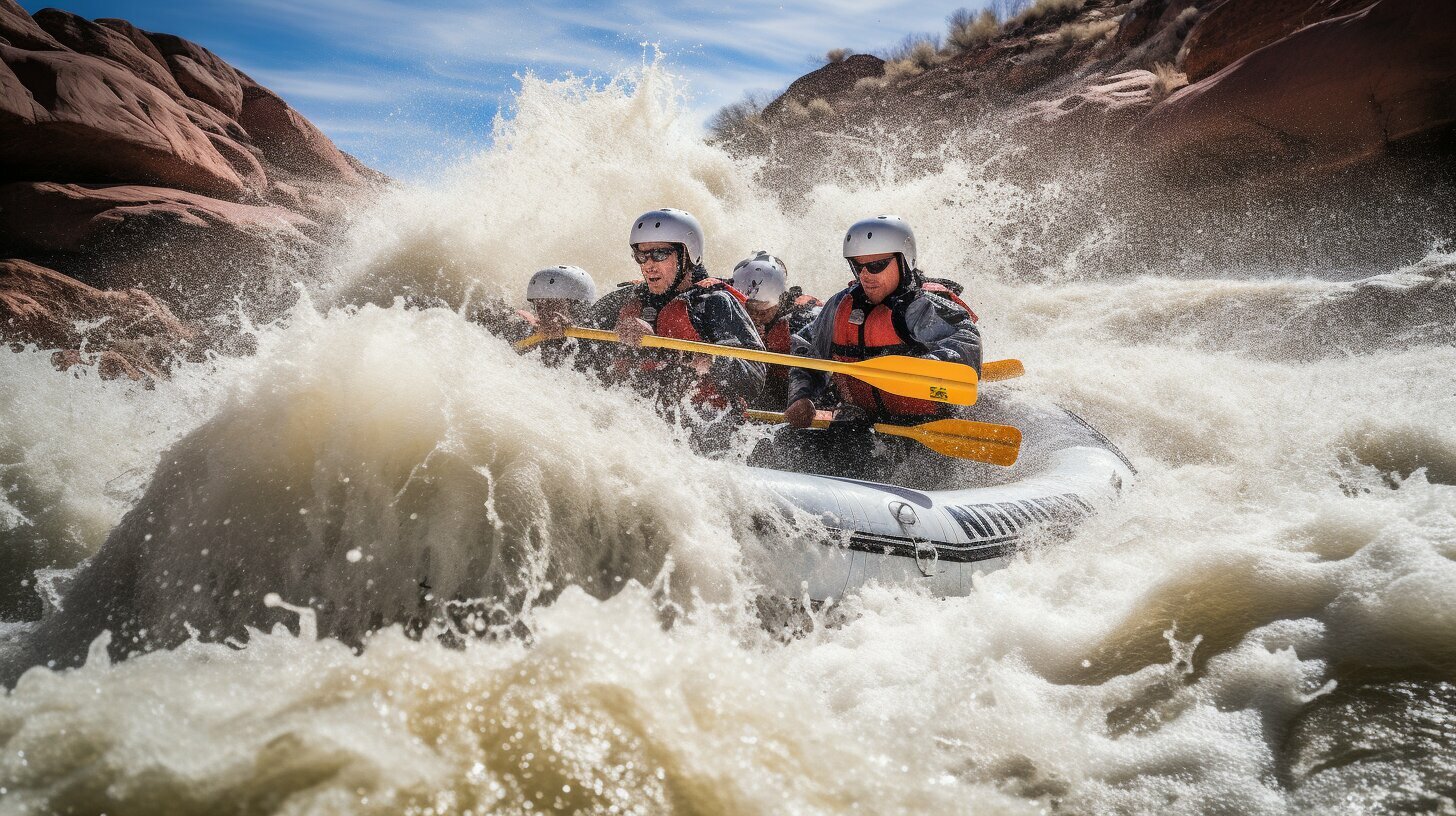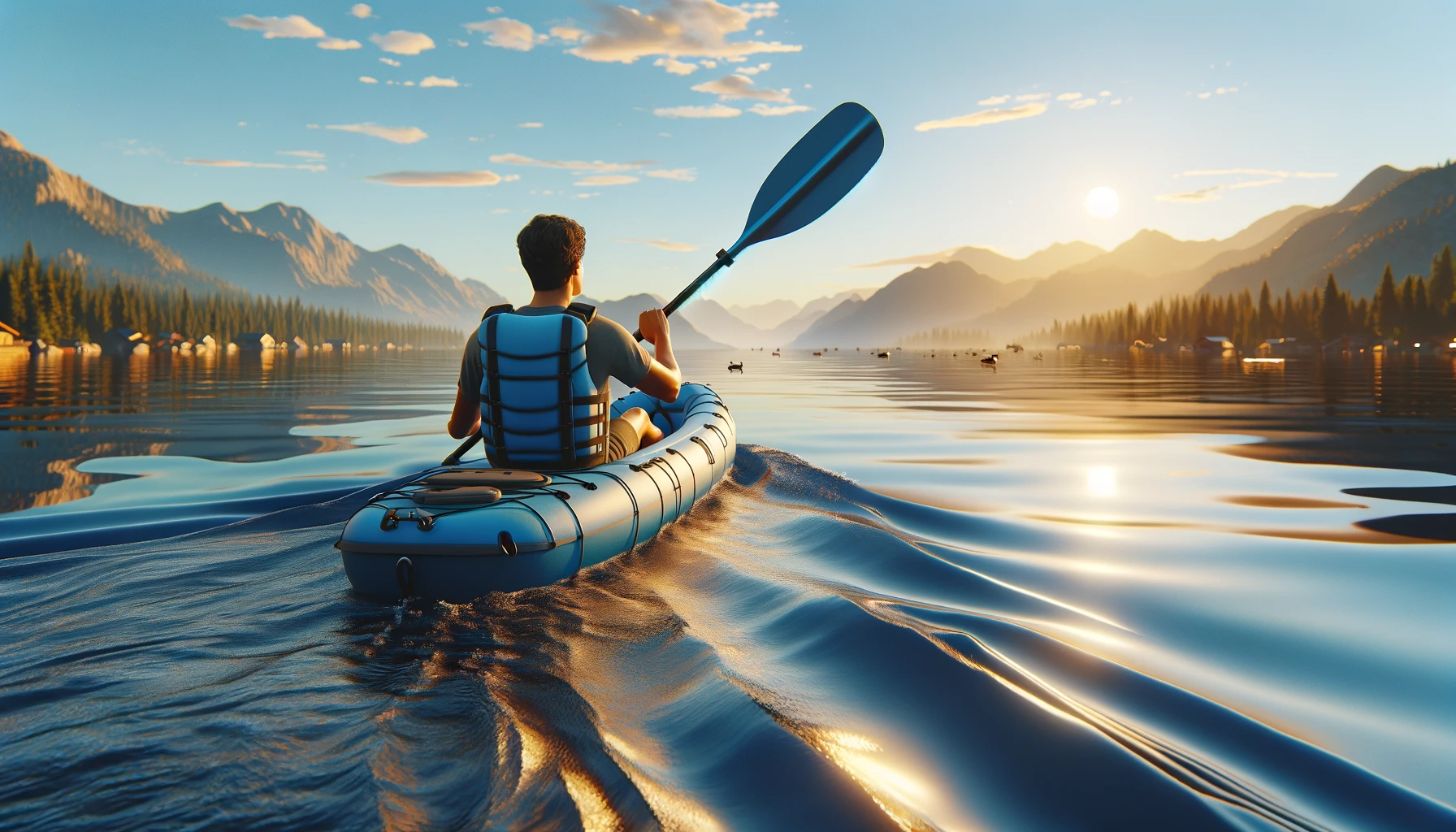If you’re looking for a fun and exciting way to explore the great outdoors, kayaking is the perfect activity for beginners. Not only is it a great full-body workout, but it also allows you to immerse yourself in nature and experience stunning scenery. However, if you’re new to kayaking, it can be overwhelming to know where to start. That’s why we’ve put together this ultimate guide to help you become a confident and knowledgeable kayaker.
Key Takeaways
- Kayaking is an accessible and low learning curve activity, making it perfect for beginners.
- Beginners should have essential kayaking equipment, including kayaks, paddles, life jackets, and safety gear.
- Basic kayaking techniques, choosing suitable locations, and building confidence are essential for beginner kayakers.
- Joining a beginner kayaking class or group and preparing for your first kayaking adventure can help you become a confident kayaker.
Why Kayaking is a Great Activity for Beginners
If you’re considering starting out in kayaking, you’re making a smart choice. Not only is kayaking a fun and exhilarating activity, but it’s also a great way to explore the natural beauty of the world around you. Here are some reasons why kayaking is an excellent activity for beginners:
| Accessibility | Kayaking is a relatively easy activity to get into, requiring only a kayak, paddle, and life jacket. You can rent equipment from local rental shops or purchase your own for a reasonable price. Many parks and waterways offer kayaking rentals and tours, making it a convenient activity for anyone to try. |
|---|---|
| Low Learning Curve | Kayaking doesn’t require any prior experience or extensive training to enjoy. While taking a beginner’s class can be helpful, it’s not necessary to get started. With just a few basic techniques, you can be paddling smoothly in no time. |
| Opportunity to Explore Nature | One of the best things about kayaking is the chance to explore new environments, such as rivers, lakes, and even the ocean. You can get up close to wildlife and take in the beauty of the natural world in a way that’s not possible from land. Plus, kayaking is a low-impact activity that has minimal impact on the environment. |
Whether you’re looking for a new hobby or a way to get outside and enjoy nature, kayaking is a fantastic activity for beginners. With a few basic skills and the right equipment, you’ll be paddling like a pro in no time!
Disclosure: When you buy through links on our site, we may earn an affiliate commission.

Essential Kayaking Equipment for Beginners
When starting out in kayaking, it’s important to have the proper equipment to ensure a safe and enjoyable experience. Here are the essential items that every beginner kayaker should have:
| Equipment | Description |
|---|---|
| Kayak | A kayak is the primary equipment for kayaking. It is crucial to choose a kayak that fits your body size and kayaking style. There are many types of kayaks, including sit-on-top, recreational, touring, and whitewater. |
| Paddle | A paddle is used to propel the kayak through the water. Make sure to select a paddle that is the appropriate length for your height and the type of kayaking you’ll be doing. |
| Life Jacket | A life jacket is a crucial safety equipment that every kayaker, regardless of skill level, should wear. Select a life jacket that fits properly and is approved by the U.S. Coast Guard. |
| Spray Skirt | A spray skirt is used to cover the hole in the kayak’s cockpit, preventing water from entering the cockpit while kayaking in rough waters. |
| Helmet | A helmet is essential for kayaking in whitewater rapids to protect your head from rocks and other obstacles. |
| Bilge Pump | A bilge pump is used to remove water from the cockpit in case water enters the kayak. |
| Whistle | A whistle is a safety device that can be used to signal for help in an emergency situation. |
| Navigation Tools | A map, compass, or GPS can be used for navigation while kayaking in unfamiliar waters. |
Investing in quality equipment ensures that you have a safe and enjoyable kayaking experience. Don’t skimp on safety equipment and choose equipment based on your kayaking style and experience level. Always check the equipment before heading out on the water to ensure that everything is in good working condition.
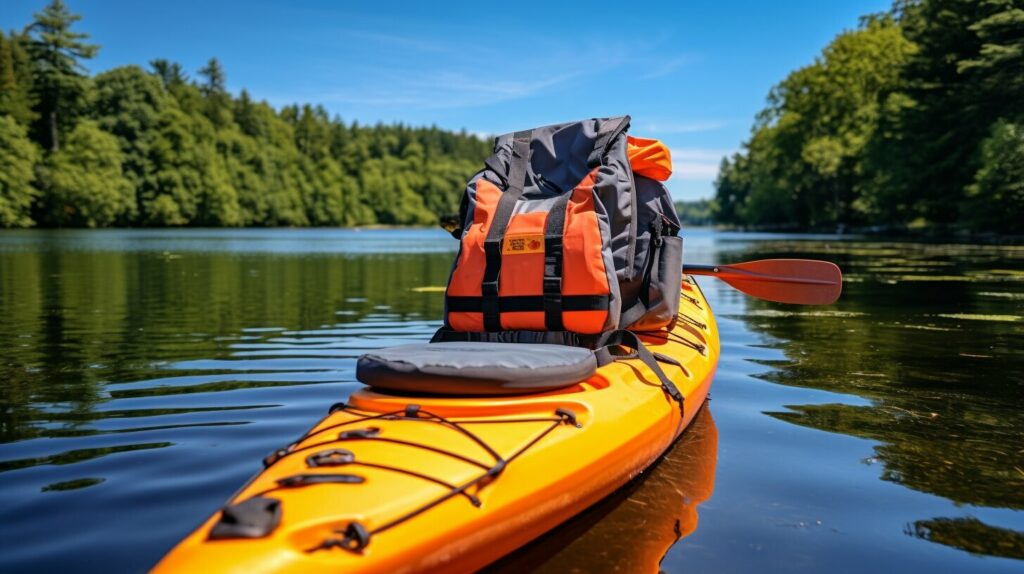
Basic Kayaking Techniques for Beginners
When starting out in kayaking, it’s important to learn the basics. Here are some of the best kayaking techniques for beginners:
| Technique | Description |
|---|---|
| Proper Paddle Grip | Hold the paddle with both hands, keeping them shoulder-width apart. Your knuckles should be facing up. |
| Forward Stroke | Place the paddle in the water near your feet and pull it towards your hip, rotating your torso as you go. Then, pull the paddle out of the water and repeat on the other side. |
| Reverse Stroke | This is the same as the forward stroke, but in reverse. Push the paddle away from your hip instead of pulling it towards you. |
| Sweep Stroke | Place the paddle in the water at the front of the kayak and sweep it in a wide arc to the back of the kayak. This is useful for turning. |
| Draw Stroke | Use the draw stroke to move the kayak sideways. Place the paddle in the water perpendicular to the kayak and pull it towards you. |
| Stop/Brace | To stop the kayak quickly, place the paddle perpendicular to the kayak and push it down into the water. |
Remember to keep your upper body relaxed and use your core muscles to power your strokes. Practice these techniques in calm waters before attempting more challenging conditions. With time and practice, you’ll become more confident and comfortable on the water!
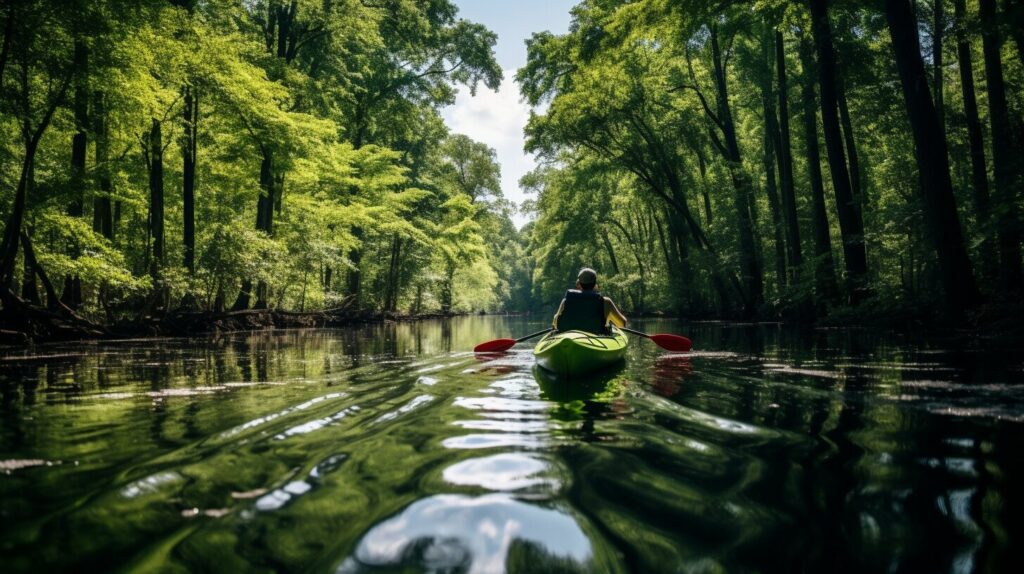
Choosing Beginner-Friendly Kayaking Destinations
When starting out in kayaking, it’s important to choose beginner-friendly destinations to practice your skills and build confidence. Here are some tips for selecting the right location:
| Factors to Consider | Examples |
|---|---|
| Water conditions | Lakes, calm rivers, and sheltered bays are ideal for beginners. |
| Access points | Look for locations with established launch points and easy-to-use docks. |
| Scenery | Choose locations with beautiful surroundings, such as national parks, wildlife reserves, or scenic coastlines. |
Additionally, it’s important to check local regulations and obtain any necessary permits before embarking on your kayaking trip. Some popular beginner-friendly kayaking destinations in the United States include:
- Devils Lake State Park in Wisconsin
- Pinckney Recreation Area in Michigan
- Everglades National Park in Florida
- Snake River in Wyoming
Remember, when choosing a beginner-friendly kayaking destination, safety should always be a top priority. Stick to calm waters, check weather conditions, and ensure that you have all the necessary equipment and safety gear. By following these tips, you can have a safe and enjoyable kayaking experience as a beginner.
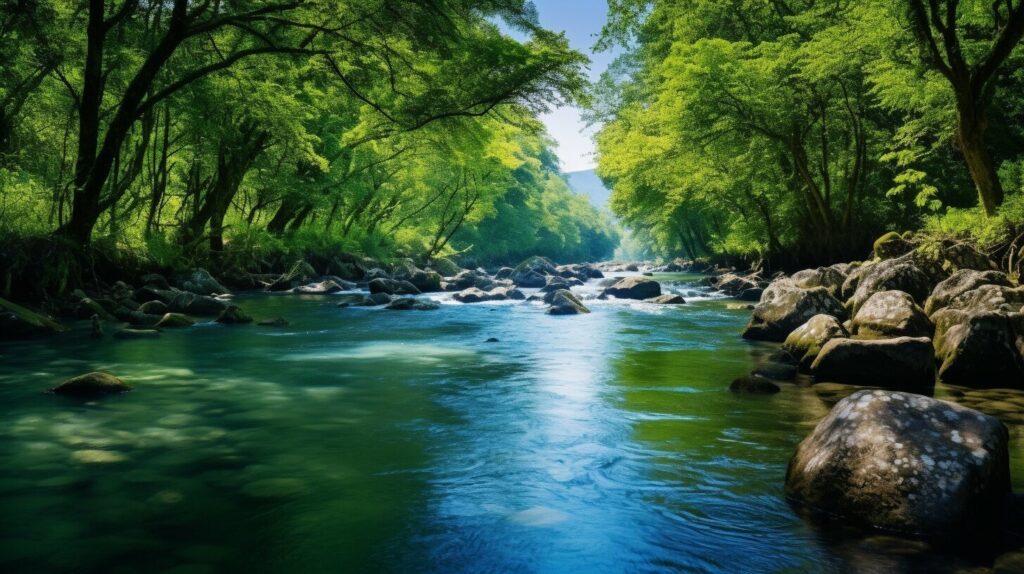
Safety Tips for Beginner Kayakers
Kayaking is an exciting and fun activity, but safety should always come first. As a beginner, it’s important to take necessary precautions to ensure a safe and enjoyable experience on the water. Here are some kayaking safety tips for beginners:
Wear a Life Jacket
Always wear a properly fitted life jacket while kayaking, regardless of your swimming ability. A life jacket can keep you afloat if you fall into the water and can also help conserve body heat in cold water.
Check Weather Conditions
Check the weather forecast before heading out on the water. Avoid kayaking during storms, high winds, or other extreme weather conditions that could make paddling difficult or dangerous.
Stay Hydrated
Bring enough water to stay hydrated throughout your kayaking trip. Dehydration can cause fatigue, muscle cramps, and other health issues that can put you at risk while on the water.
Paddle with a Buddy
Whenever possible, paddle with another kayaker. If one of you gets into trouble, the other can provide assistance or call for help.
Know Your Limits
Be honest with yourself about your abilities and don’t push beyond your limits. Start with short trips in calm waters and gradually increase the difficulty level as you gain experience.
Learn Self-Rescue Techniques
Learn basic self-rescue techniques, such as how to climb back into your kayak if you fall out or how to turn over your kayak if it capsizes. These skills can help you avoid serious injury or even save your life in an emergency situation.
Remember, safety should always be your top priority when kayaking, especially as a beginner. By taking these precautions and following basic safety guidelines, you can enjoy a safe and rewarding kayaking experience.
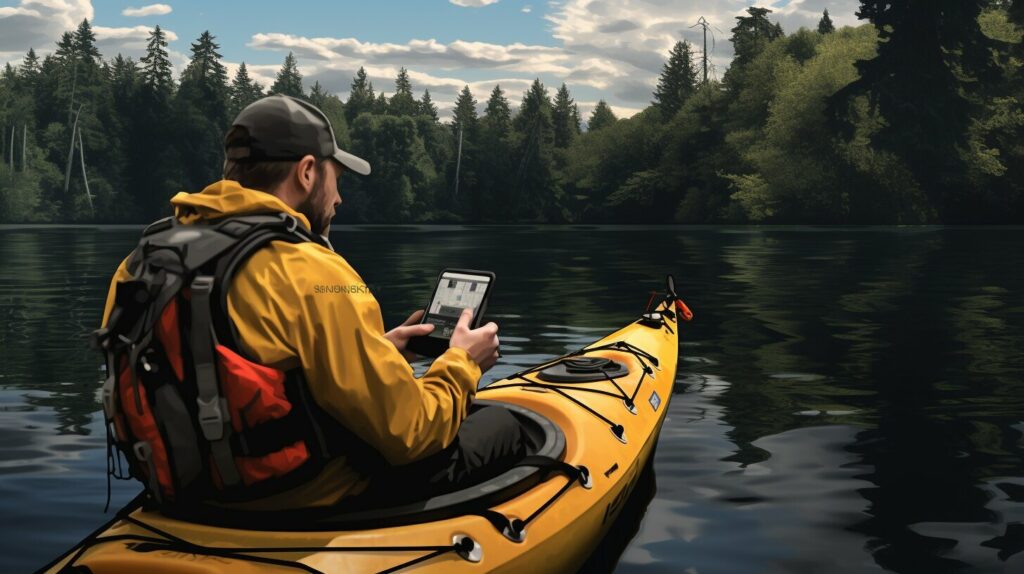
Essential Skills for Beginner Kayakers
As a beginner kayaker, it’s important to develop a range of skills to ensure your safety and enjoyment on the water. Here are some essential skills to focus on:
| Skill | Description |
|---|---|
| Self-Rescue Techniques | Learning how to re-enter your kayak in the event of a capsize is crucial. Practice flipping your kayak and getting back in until you feel comfortable with the process. |
| Navigation | Knowing how to read a map and use a compass can come in handy when exploring new waterways. Take a navigation course or practice using these tools on familiar routes. |
| Understanding Kayak Anatomy | Knowing the different parts of your kayak and their functions can help you identify and fix any issues that may arise while on the water. |
| Maneuvering in Different Conditions | As you gain experience, practice paddling in different weather and water conditions, such as wind, waves, and currents. |
Developing these essential skills will not only make you a safer kayaker, but it will also improve your confidence and ability to handle different kayaking situations.
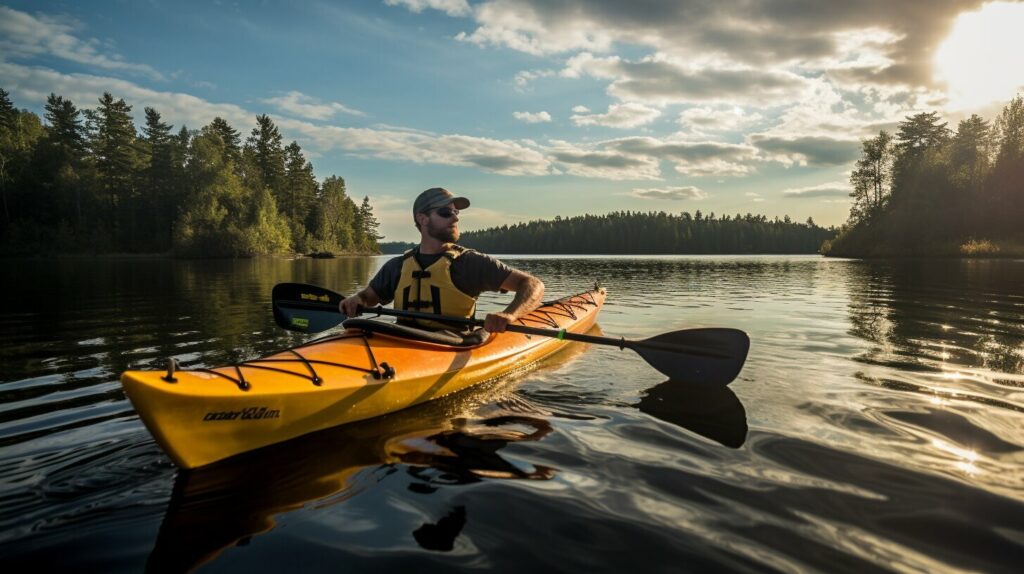
Joining a Beginner Kayaking Class or Group
If you’re starting out in kayaking, joining a beginner kayaking class or group can be an excellent way to gain confidence and improve your skills. Not only will you have access to experienced instructors who can teach you the proper techniques, but you’ll also have the opportunity to meet other beginners who are in the same boat as you! Here are some reasons why you should consider joining a kayaking class or group:
- Access to experienced instructors: In a kayaking class, you’ll have the opportunity to learn from experienced instructors who can teach you the proper techniques and safety measures. They can also provide guidance and answer any questions you may have.
- Social interactions: Joining a kayaking group can be a great way to meet new people who share your interests. You can make friends, exchange tips and tricks, and even plan kayaking trips together!
- Opportunities for improvement: By joining a kayaking class or group, you’ll have the chance to improve your skills and challenge yourself. You may even be able to progress to more advanced levels and take part in more challenging kayaking adventures.
When looking for a kayaking class or group, make sure to do your research and find one that is beginner-friendly. Look for classes that are tailored to beginners and have experienced instructors who can provide guidance and support. You can also check with your local kayak rental companies or outdoor gear stores to see if they offer any classes or groups.
Remember, kayaking can be a fun and rewarding activity, but it’s important to learn the proper techniques and safety measures before setting out on your own. By joining a beginner kayaking class or group, you’ll have access to the resources and support you need to become a confident and skilled kayaker.
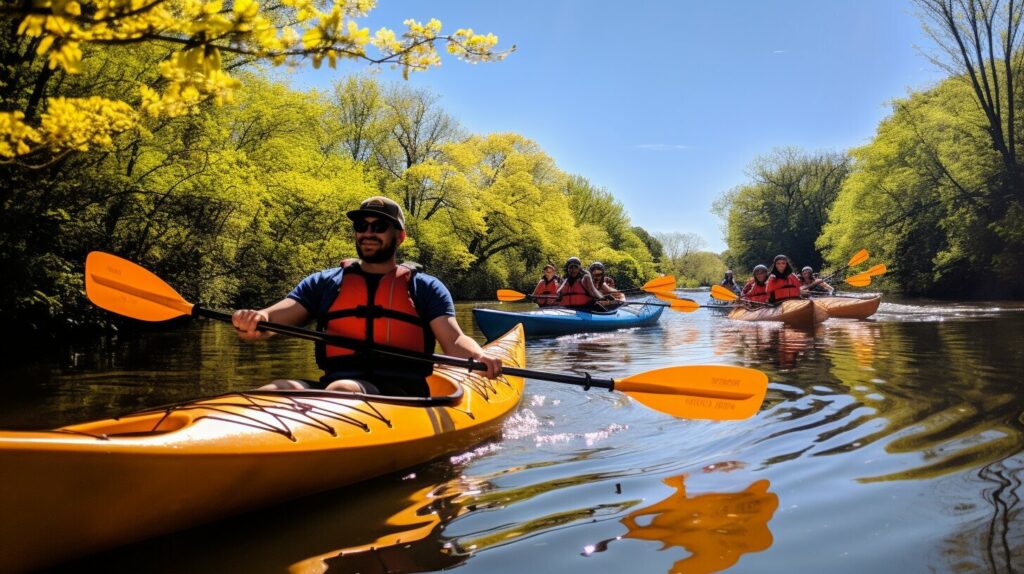
Tips for Building Confidence as a Beginner Kayaker
Kayaking can be an intimidating sport, especially for beginners. However, with the right mindset and preparation, anyone can become a confident kayaker. Here are some tips to help you build your confidence:
- Start small: Begin with shorter trips to familiarize yourself with your kayak and the water. Gradually increase the duration and difficulty as you become more comfortable.
- Set realistic goals: Don’t push yourself too hard too fast. Instead, set achievable goals and celebrate your progress along the way.
- Practice in a safe environment: Find a calm, shallow body of water to practice and improve your skills. Avoid fast-moving rivers or open water until you feel more confident.
- Take a lesson: Consider taking a kayaking lesson or joining a beginner’s group. This can help you learn proper techniques and safety measures from experienced instructors.
- Stay positive: It’s okay to make mistakes or feel nervous. Stay positive and remind yourself of your successes. With time and practice, you’ll become a confident kayaker.
Remember, building confidence takes time and effort. Don’t rush yourself and enjoy the journey. Soon enough, you’ll be paddling with ease and confidence.
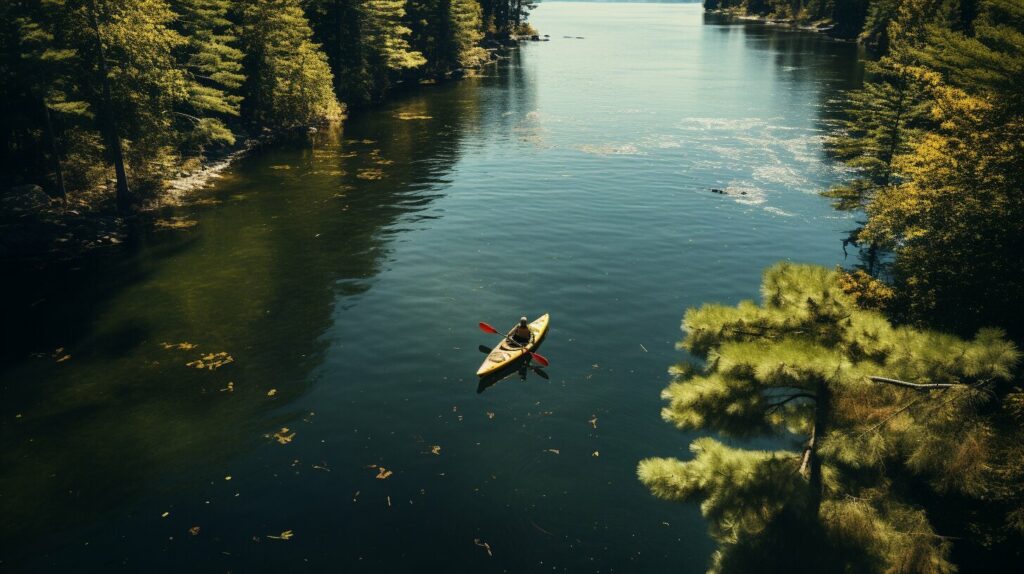
Preparing for Your First Kayaking Adventure
Now that you have learned the essentials of kayaking and are ready to take your first adventure, it’s important to properly prepare for a safe and enjoyable experience. Here are some steps to take before hitting the water:
- Plan your trip: Choose a beginner-friendly location that fits your skill level, research local regulations, and check weather conditions.
- Pack essentials: Bring appropriate clothing for the weather, sun protection, water-resistant shoes, and plenty of water and snacks.
- Check your equipment: Inspect your kayak, paddle, and safety gear to ensure everything is in good condition and functioning properly.
- Practice: Before heading out, practice basic strokes and maneuvers in a safe and shallow area to build confidence.
- Go with a partner: Consider bringing a friend or joining a group for added safety and social support.
Remember, starting out in kayaking can be an exciting and rewarding experience. By properly preparing for your first adventure, you can ensure a safe and enjoyable journey on the water.
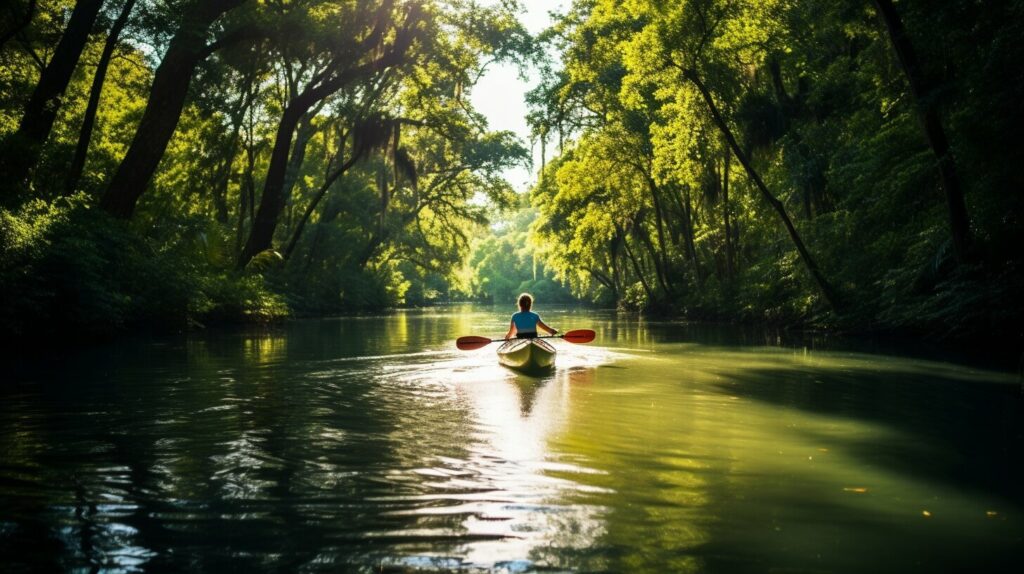
Conclusion
You’ve learned about the many benefits of kayaking for beginners, including how it provides an opportunity to explore nature and is an accessible activity.
You also discovered essential kayaking equipment for beginners, such as kayaks, paddles, life jackets, and safety gear. Learning basic kayaking techniques, including proper paddle grip, basic strokes, and maneuvering the kayak, will help you get started.
When choosing beginner-friendly kayaking destinations, focus on calm waters, easy access points, and scenic environments. Safety should always be a top priority, so remember to wear a life jacket, check weather conditions before heading out, and stay hydrated.
Developing additional skills, like self-rescue techniques, navigation, and understanding kayak anatomy, will make you a more confident and competent kayaker. Joining a beginner kayaking class or group can be a great way to learn from experienced instructors, socialize, and improve your skills.
Building confidence as a beginner kayaker takes time, but starting with short trips, setting realistic goals, and practicing in safe environments will help. Before embarking on your first kayaking adventure, plan ahead, pack essentials, and check local regulations.
We hope this guide has provided you with the information and inspiration you need to start your kayaking journey with confidence. Now, get out there and paddle away!
FAQ
Q: Can anyone try kayaking?
A: Yes, kayaking is a great activity for beginners of all ages. It requires no previous experience and can be enjoyed by anyone who is willing to give it a try.
Q: What equipment do I need for kayaking?
A: As a beginner, you will need a kayak, paddle, life jacket, and some basic safety gear. It is important to have the right equipment to ensure your safety and enjoyment on the water.
Q: Do I need to know how to swim to kayak?
A: While it is not a requirement to know how to swim, it is highly recommended. Knowing how to swim will give you added confidence and safety while kayaking.
Q: How long does it take to learn kayaking?
A: Learning the basic techniques of kayaking can be accomplished in a few hours. However, becoming proficient and comfortable on the water may take some practice and experience.
Q: Can I kayak alone as a beginner?
A: It is recommended that beginners kayak with a partner or join a beginner kayaking class or group. This will ensure that you have support and guidance as you learn the ropes.
Q: Are there specific kayaking destinations for beginners?
A: Yes, there are many beginner-friendly kayaking destinations that offer calm waters, easy access points, and beautiful scenery. Researching and selecting the right location can enhance your kayaking experience.
Q: How do I stay safe while kayaking?
A: Safety should always be a top priority when kayaking. Wear a life jacket, check weather conditions before heading out, stay hydrated, and inform someone about your kayaking plans.
Q: What skills do I need to develop as a beginner kayaker?
A: As a beginner, it is important to learn basic paddle strokes, how to maneuver the kayak, and self-rescue techniques. Building these skills will ensure your safety and enhance your kayaking experience.
Q: Should I join a beginner kayaking class or group?
A: Joining a beginner kayaking class or group can be highly beneficial. It provides access to experienced instructors, opportunities for social interactions, and a supportive learning environment.
Q: How can I build confidence as a beginner kayaker?
A: Building confidence as a beginner kayaker takes time and practice. Start with short trips, set realistic goals, and practice in safe environments. As you gain experience, your confidence will grow.
Q: What should I do to prepare for my first kayaking adventure?
A: Before your first kayaking trip, plan your route, pack essential gear including water and sunscreen, and familiarize yourself with local regulations. Proper preparation will ensure a smooth and enjoyable experience.
